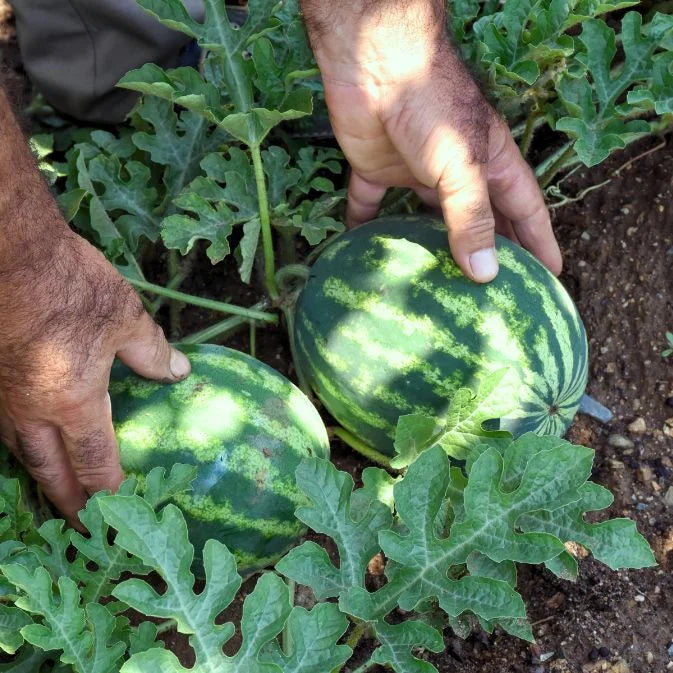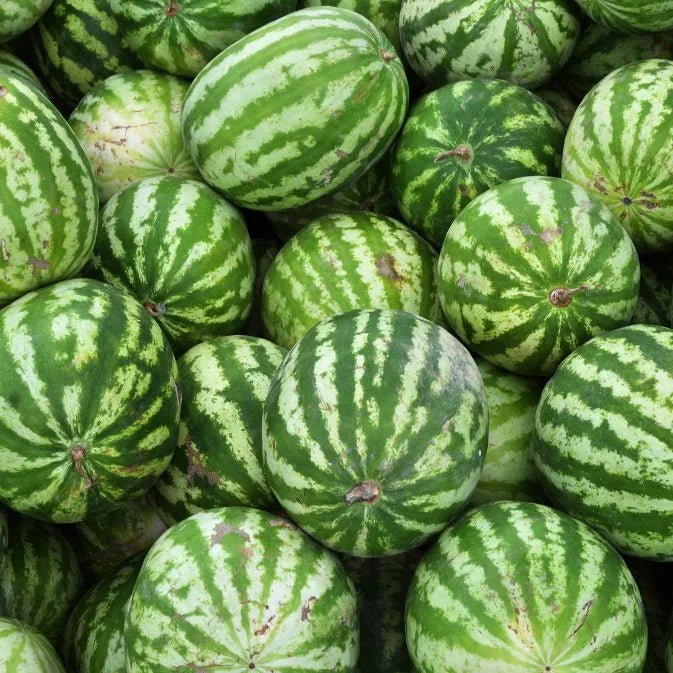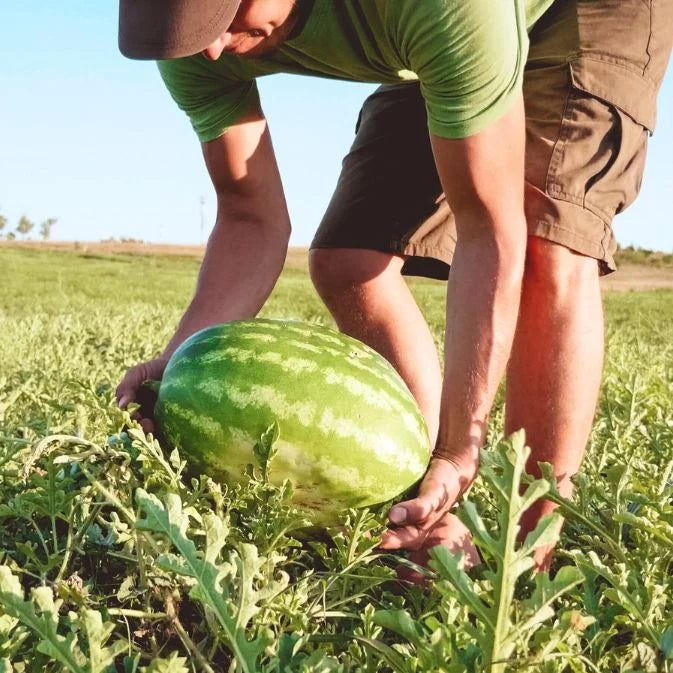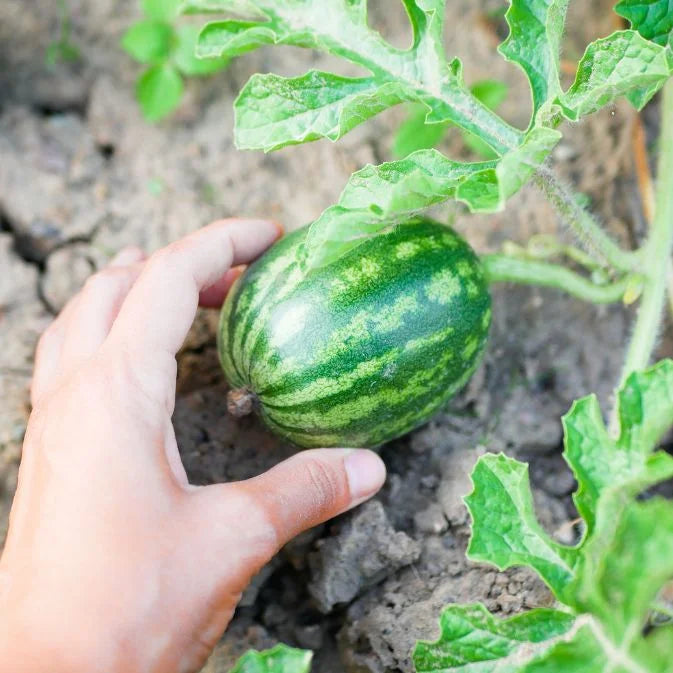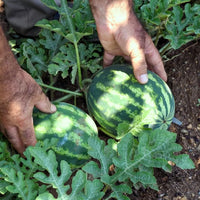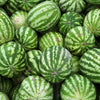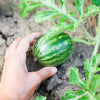Introduction
Watermelon, with its juicy and refreshing flesh, is a favourite summer treat for many Australians. Growing watermelons in your garden is a rewarding experience, but it requires careful planning and attention to detail. In this comprehensive guide, we will take you through the step-by-step process of growing watermelon in Australia. From choosing the right planting time to addressing common growing problems and finally harvesting sweet and succulent watermelons, we’ll cover everything you need to know. Whether you have a large backyard or limited space in pots, this guide will help you enjoy a successful watermelon harvest. Let’s get started!
When to Plant Watermelon in Australia
Watermelons are warm-season plants that thrive in hot and sunny weather. The best time to plant watermelon in Australia depends on the region and climate. In most parts of Australia, watermelons are typically planted during late spring to early summer when the soil has warmed up, and the risk of frost has passed.
For regions with cooler climates, it’s essential to wait until the soil has reached a minimum temperature of 21°C (70°F) before planting watermelon seeds or seedlings. In northern regions with warmer winters, watermelon planting can begin in early spring.
To get a head start on the growing season, you can start watermelon seeds indoors in biodegradable pots about 3 to 4 weeks before the last expected frost date. Transplant the seedlings outdoors once the soil temperature has warmed up.
Keep in mind that watermelons are sensitive to cold temperatures and can be damaged by frost. If the weather suddenly turns cold after planting, protect your watermelon plants with frost covers or cloths.
By choosing the right planting time, you can give your watermelon plants the best chance of thriving and producing a delicious harvest.
How Long Does It Take for Watermelon to Grow
Watermelon is not the quickest crop to mature, but with proper care and optimal growing conditions, you can expect a bountiful harvest within 70 to 90 days from the time of planting.
The exact time it takes for watermelons to grow to maturity can vary depending on various factors, including the watermelon variety, weather conditions, soil quality, and the care provided.
Determinate watermelon varieties, also known as bush or compact watermelons, tend to mature slightly faster than indeterminate varieties. These varieties stop growing once the fruits have formed and ripen over a shorter period.
Indeterminate watermelon varieties, on the other hand, continue to grow and produce new flowers and fruits throughout the growing season until the first frost. While they may take a bit longer to mature, they can yield a more extended harvest.
To speed up watermelon growth and ensure optimal development, consider the following tips:
- Warmth: Watermelons thrive in warm temperatures, so ensure they are planted in an area that receives full sunlight and maintains a warm microclimate.
- Watering: Keep the soil consistently moist, especially during hot weather, to prevent stress on the plants and promote healthy growth.
- Fertilisation: Provide watermelon plants with balanced fertilisers rich in potassium and phosphorus, which are essential for fruit development.
- Proper Spacing: Plant watermelon seeds or seedlings at the recommended spacing to ensure adequate air circulation and sunlight exposure for optimal growth.
By following these guidelines and providing proper care, you can enjoy ripe and delicious watermelons within a few months of planting.
How to Grow Watermelon from Seed
Growing watermelons from seed is a rewarding and cost-effective way to cultivate this delicious summer fruit. Here’s a step-by-step guide to growing watermelon from seed:
- Seed Selection: Choose high-quality watermelon seeds from a reputable supplier or nursery. Consider the watermelon variety that suits your preferences and growing conditions.
- Seed Starting Mix: Use a seed starting mix or a light, well-draining potting mix for germinating watermelon seeds. Avoid using heavy garden soil, as it may compact and hinder root growth.
- Germination: Sow watermelon seeds in seedling trays or small pots, planting them about 2 cm (1 inch) deep. Keep the soil consistently moist, and provide warmth for germination. The ideal germination temperature is around 24°C to 32°C (75°F to 90°F).
- Transplanting: Once the seedlings develop their first true leaves, transplant them into individual pots or containers with sufficient space for root development.
- Hardening Off Seedlings: Before transplanting watermelon seedlings outdoors, gradually acclimate them to outdoor conditions by exposing them to increasing amounts of sunlight and outdoor temperatures over several days.
- Planting Outdoors: Plant the hardened-off watermelon seedlings in the prepared garden soil, ensuring they are spaced appropriately according to the specific watermelon variety’s growth habit.
- Watering and Care: Water the watermelon seedlings regularly to keep the soil consistently moist. Apply a balanced liquid fertiliser to provide essential nutrients for healthy growth.
- Mulching: Mulch around the base of watermelon plants to conserve soil moisture, regulate temperature, and suppress weed growth.
- Support: Depending on the watermelon variety, provide support for the vines using trellises or stakes to keep them off the ground and prevent rotting.
- Pollination: Watermelons require pollination for fruit development. Bees and other pollinators are essential for transferring pollen between flowers. Encourage pollinators by planting flowers nearby.
By following these steps, you can successfully grow watermelons from seed and enjoy a sweet and juicy harvest from your own garden.
How to Grow Watermelon in Pots
Even if you have limited garden space, you can still grow watermelons in pots or containers on your patio, balcony, or even indoors under the right conditions. Here’s how to grow watermelons in pots:
- Container Selection: Choose large and deep containers with a capacity of at least 30 litres (8 gallons) to provide enough space for watermelon roots to grow. Ensure the containers have drainage holes to prevent waterlogging.
- Potting Mix: Use a well-draining and nutrient-rich potting mix enriched with compost or organic matter. Avoid using garden soil, as it may compact in containers.
- Seed Starting: Start watermelon seeds indoors in biodegradable pots about 3 to 4 weeks before the last expected frost date. Transplant the seedlings into larger containers once they develop their first true leaves.
- Placement: Place the containers in a sunny location that receives at least 6 to 8 hours of direct sunlight daily. Watermelons require full sun for optimal growth and fruit development.
- Watering: Keep the potting mix consistently moist but not waterlogged. Watermelon plants have high water requirements, especially during hot and dry weather.
- Fertilisation: Feed the watermelon plants with a balanced liquid fertiliser every two weeks to provide essential nutrients for healthy growth.
- Support: As the watermelon vines grow, provide support such as trellises or stakes to keep them upright. This prevents the vines from sprawling and conserves space in your garden.
- Pollination: Watermelons require pollination for fruit to set. Bees and other pollinators are essential for transferring pollen between flowers. Encourage pollinators by planting flowers nearby.
- Harvesting: Harvest watermelons once they reach full maturity and have a rich colour. The fruit should sound hollow when tapped and have a sweet aroma.
By following these steps, you can successfully grow watermelons in pots and enjoy the taste of summer in any small space.
Watermelon Growing Problems
While growing watermelons can be a rewarding experience, several common problems may arise during the growing season. Identifying and addressing these issues early on can help ensure a successful harvest. Here are some common watermelon growing problems and how to handle them:
- Pests: Watermelon plants may be affected by various pests, such as aphids, cucumber beetles, and spider mites. Inspect your plants regularly and use organic pest control methods, such as neem oil or insecticidal soaps, to manage pest populations.
- Diseases: Watermelons are susceptible to diseases such as powdery mildew, downy mildew, and bacterial wilt. To prevent disease, avoid overhead watering, provide proper spacing between plants, and choose disease-resistant varieties.
- Blossom End Rot: Blossom end rot causes watermelon fruit to develop dark, sunken spots at the blossom end. It is typically caused by calcium deficiency or irregular watering. Ensure consistent moisture levels and add calcium to the soil if necessary.
- Poor Fruit Set: Poor fruit set can occur due to inadequate pollination or extreme temperatures. Encourage pollinators by planting flowers nearby and provide shade during hot weather to prevent stress on the plants.
- Sunburn: Watermelon fruit can be susceptible to sunburn in extreme heat. Provide shade or use shade cloth to protect the fruit from direct sunlight.
- Splitting: Rapid fluctuations in watering or rainfall can cause watermelon fruits to split. Maintain consistent moisture levels to prevent splitting.
- Poor Fruit Quality: Poor fruit quality can result from insufficient nutrients or irregular watering. Ensure the watermelon plants receive adequate nutrients and water consistently.
By being vigilant and promptly addressing these issues, you can help your watermelon plants stay healthy and produce a successful harvest of delicious and sweet fruits.
Watermelon Plant Leaves
The leaves of watermelon plants play a vital role in the health and growth of the plant. By understanding common leaf characteristics and potential issues, you can ensure your watermelon plants remain healthy throughout the growing season. Here are some key points to consider about watermelon plant leaves:
- Leaf Shape: Watermelon leaves are large, lobed, and deeply indented, resembling a palmate shape. Each leaf has several lobes with serrated edges.
- Leaf Colour: The colour of watermelon leaves is typically a vibrant green, indicating healthy growth. Yellowing or browning of leaves can be a sign of nutrient deficiencies or other issues.
- Leaf Position: Watermelon leaves are arranged alternately on the vine and attach to long, trailing stems.
- Leaf Functions: The leaves of watermelon plants play a crucial role in photosynthesis, the process by which the plant converts sunlight into energy and produces sugars to fuel growth and fruit development.
- Leaf Diseases: Watermelon leaves can be susceptible to diseases such as powdery mildew and downy mildew. Early detection and treatment of leaf diseases can prevent further spread and damage.
- Leaf Pests: Watermelon leaves may attract pests such as aphids and spider mites. Regular inspection and the use of organic pest control methods can help manage pest populations.
- Leaf Pruning: Some gardeners choose to prune watermelon plants to improve airflow and reduce the risk of diseases. However, pruning should be done with caution to avoid removing too many leaves and impacting the plant’s ability to photosynthesize.
By paying attention to the appearance and health of watermelon plant leaves, you can address any issues promptly and ensure that your watermelon plants have the best chance of thriving and producing a bountiful harvest.
Harvesting Watermelons
Harvesting watermelon at the right time ensures the fruits are sweet, juicy, and at their peak flavour. The timing of the harvest can vary depending on the watermelon variety and growing conditions. Here’s how to know when your watermelons are ready to be harvested:
- Observing the Fruit: As watermelons near maturity, they change in appearance. Look for a dull or matte sheen on the surface of the fruit rather than a shiny appearance. The bottom of the watermelon should have a creamy or yellowish colour.
- Tapping the Fruit: Tap the watermelon gently with your fingers. Ripe watermelons produce a hollow sound, while unripe ones may sound dull.
- Checking the Tendril: Look at the tendril nearest the fruit stem. Once it turns brown and dries up, the watermelon is likely ready for harvest.
- Measuring Sugar Content: For a more precise determination of ripeness, use a refractometer to measure the sugar content of the watermelon. A sugar level of around 10% or higher indicates optimal ripeness.
- Cutting the Fruit: Use a sharp knife or garden shears to cut the watermelon from the vine, leaving a short stem attached to the fruit.
- Leaving to Ripen: If you’re unsure about the watermelon’s ripeness, you can leave it at room temperature for a few days to further develop its sweetness.
Avoid overripe watermelons, as they may become mushy and lose their optimal flavour. By harvesting watermelons at the right time, you can enjoy sweet and juicy fruits that are perfect for summer refreshment.
Conclusion
Growing watermelon in Australia can be a rewarding and enjoyable experience for gardeners of all levels. By understanding the best planting time, providing proper care, and addressing potential issues, you can cultivate healthy and productive watermelon plants. Whether you have a large backyard or limited space in pots, the joy of harvesting sweet and juicy watermelons straight from your garden is well worth the effort. By following the step-by-step process outlined in this comprehensive guide, you’ll be well on your way to a successful watermelon harvest that will delight your taste buds all summer long. Happy gardening and bon appétit!


